
Facebook Twitter Pinterest Flickr Google+ YouTube Instagram
Written on: December 31st, 2012 in Blog Posts, Q & A's
Q: “I’m trying to find out about what some people in different cultures do to prepare for a new year to start a family tradition beyond what we normally do. Can you suggest any?”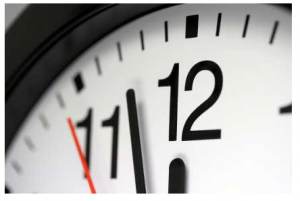
This time of year many of us review reflections about the year past, and plan for an evening watching the Times Square ball drop or attending a local celebration. As your question precludes, there are other ideas to bring in, and ring in, the New Year.
Setting the tone for how our year will go seems to be the theme for many of these rituals. For example, a blogger and writer named Robin Brande offers suggestions based upon Korean traditions. In her blog, she points out the idea that we can concentrate on some aspect of change for the upcoming year, from being healthy to having abundance.
Many rituals in the U.S. and around the globe focus upon interesting acts while counting down to midnight to promote good luck and prosperity. For example, you might know someone who eats black-eyed peas on New Year’s Day.  According to this DivineCaroline article, “‘Each pea has an eye in it and there’s a sense of looking into the future and bringing good luck to people who eat them,’ said William Ferris, a professor at the University of North Carolina and co-editor of the Encyclopedia of Southern Culture.” If you are traveling or feel like trying out a new dish at home, it may be lucky to seek out culinary delights that bestow the best for a New Year, as described on CNN’s article “10 global New Year’s Eats” by Amanda Kludt.
According to this DivineCaroline article, “‘Each pea has an eye in it and there’s a sense of looking into the future and bringing good luck to people who eat them,’ said William Ferris, a professor at the University of North Carolina and co-editor of the Encyclopedia of Southern Culture.” If you are traveling or feel like trying out a new dish at home, it may be lucky to seek out culinary delights that bestow the best for a New Year, as described on CNN’s article “10 global New Year’s Eats” by Amanda Kludt.
Cleaning the house and clearing out the clutter is a common theme, such as described on this Huffington Post article by Carolina Moreno, “New Year’s Eve Traditions and Superstitions: 22 Latino Rituals to Guarantee a Prosperous 2013. Last year, the New York Times also gave succinct suggestions from many countries such as the laughing in the New Year (from Japan).
While prepar ing for the new day in our new calendar year, you also may like to know how to say “Happy New Year” in another language. Here is a list from HubPages on “How to Say ‘Happy New Year’ in 165+ Languages“. If you live in Sussex County Delaware, you may freely use Mango Languages online – one of the many resources you can access through your library card.
ing for the new day in our new calendar year, you also may like to know how to say “Happy New Year” in another language. Here is a list from HubPages on “How to Say ‘Happy New Year’ in 165+ Languages“. If you live in Sussex County Delaware, you may freely use Mango Languages online – one of the many resources you can access through your library card.
The Delaware Library Catalog provides some further reading for traditions and ways to celebrate the New Year. Most of Delaware’s public libraries will close at 5pm today for New Year’s Eve and through New Year’s Day, and will reopen for business on Wednesday, January 2, 2013. Remember that even if your library building is closed, we’re always open online through our Ask a Librarian Delaware service.
Setting up a new way to roll out the old and bring in the new is always an opportunity to enrich our lives and set the way for lasting resolutions. Whichever way you decide to spend the last day of 2012, may it be fun and peaceful, reflective and full of anticipation for better times to come.
Thank you again for your question and for your support of our libraries!
Happy New Year from all of us at your Delaware Libraries!
Written on: December 22nd, 2012 in Blog Posts, Q & A's
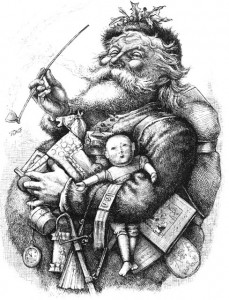 Q: “I want to know if Santa is real. Do you know?”
Q: “I want to know if Santa is real. Do you know?”
Thank you for your timely question! Every holiday season this question comes up and it’s great that you are asking a librarian.
There is a lot of discussion about Santa this time of year, and questions about how he can manage the amazing trip around the globe to give us presents using a sleigh and flying reindeer.
Santa has been a legend for a long time. History shows us that Santa has had various names, such as St. Nicholas and Kris Kringle, and that there are similar legends about him in different parts of the world and in different times. One source, the Unmuseum, tells us that “the original St. Nicholas lived in southwestern Turkey in the 4th century.”
According to Wikipedia, which is often a helpful starting place for questions dealing with folklore, earliest traces of Santa show up as far back as the 1820s. This means your parents, their parents, their parents’ parents, and their parents’ parents’ parents probably marveled about Santa, too.
Remember that Wikipedia is easily edited, so it’s always good to verify the information found there with other sources. Let’s turn to some now to find more about Santa and the history of how many people from all over the world celebrate this festive time of year.
The spirit of Christmas that we enjoy today, and one that Santa often represents for us, was not always allowed. In fact, according to an archived article from the BBC, in England a “strict protestant, Philip Stubbes, in the late 16th century, express[ed] the Puritan view that Christmas was a dangerous excuse for excessive drinking, eating, gambling and generally bad behaviour.” By 1644, Christmas celebrations were illegal, but this was unpopular and by 1660 (under a new Monarchy) people were openly celebrating again (but in a more subdued manner).
Another history comes from a Denmark site all about Santa.
Fast forward to 1897 – over a hundred years ago! – when an eight-year old girl named Virginia asked the same question you did. She wrote to the local newspaper to ask if Santa is real since she was told by her father that The Sun newspaper, never lied. The famous response was written by the Editor, Frances P. Church who stated, “Yes Virginia, there is a Santa Claus.” He went on to say, “He exists as certainly as love and generosity and devotion exist, and you know that they abound and give to our life its highest beauty and joy.”
Some people think that the Santa we know today was actually created as a way to advertise a certain brand of soda. Snopes is a good site to use for separating fact from fiction. According to Snopes the modern image of Santa was not made up a company, but has been used by them.
If you’d like to look for Santa on Christmas Eve, chances are you’d have a hard time seeing him since it looks like we’ll have cloudy skies Monday night this year. However, you can use the NORAD Santa Tracker to see his progress around the world. They even have a countdown to Christmas!
May the joyous spirit of the season be with us all throughout the year.
Happy Holidays from all of us at your Delaware Libraries!
Written on: December 20th, 2012 in Blog Posts
 The school violence at the Sandy Hook Elementary School in Newtown, CT is having an impact on everyone, even those living thousands of miles away. If we, as adults, can’t begin to understand this incomprehensible act, how can we begin to answer the questions our children have? How do we reassure them of their own safety?
The school violence at the Sandy Hook Elementary School in Newtown, CT is having an impact on everyone, even those living thousands of miles away. If we, as adults, can’t begin to understand this incomprehensible act, how can we begin to answer the questions our children have? How do we reassure them of their own safety?
There is now a Libguide on helping children cope with this tragic event. A list of books, websites, and videos are offered, not only to give parents, caregivers, and other adults the resources to process their own feelings, but also to answer children’s questions, to reassure them of their safety and to take positive steps toward the future.
Written on: December 16th, 2012 in Blog Posts, Q & A's
Q: “Do you know of any books or resources to deal with holiday stress? Especially for those family gatherings?”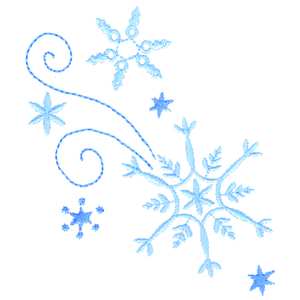
Holidays can be wonderful times but can sometimes challenge the calmest of us with heightened emotions due to anticipation, extra work, holiday preparations, and family events. To ease some tension and anxiety, experts advise a variety of methods for our consideration.
Sixteen smile-bringing quotes are offered as quick tension relievers from the Huffington Post.

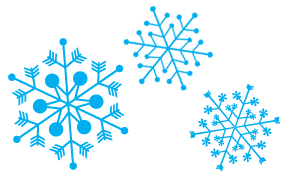
- Don’t do the same old thing.
- Don’t expect miracles.
- Don’t overdo it.
- Don’t worry about the way things should be.
The Delaware Library Catalog also has a variety of books and resources for relieving stress. These range from meditation techniques to exercise routines, and all provide ideas for how to improve our lifestyles. The New Year is often a good time to take on a healthy resolution – you may be on your way to a stress-free holiday at this time next year!
We hope this gives you some immediately effective techniques and ideas to reduce any holiday tension you may have. Please feel free to contact us again if you have other questions; we truly appreciate it! You can ask us in person, on the telephone, by email, and live on our 24/7 chat service. We love hearing from our Delaware patrons and students!
Happy Holidays to all from your Delaware Libraries!
Written on: December 9th, 2012 in Blog Posts, Q & A's
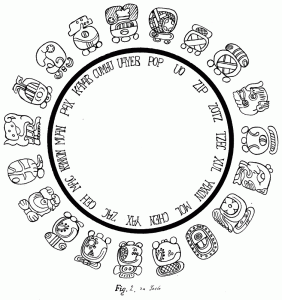
The Mayan Calendar is intricate and interesting. Simplistically, as explained on the Marjorie Barrick Museum’s site from the University of Nevada, it cycles every 5,000+ years. December 21, 2012 has been connected with the end/beginning of a new cycle. The Mayan Calendar is close to its “year end” and is ready to start again in the same way our calendar ends on December 31.
University of Delaware Professor David Mills provides a further look explaining such complexities of the Calendar as the round and long-count calendars, describing the glyphs, and comparing the Gregorian and Mayan Calendars.
Another way to see how the Mayan Calendar corresponds to the Gregorian calendar is on a blog from The National Museum of the American Indian, as it is counting down the Mayan Calendar days. As noted on their blog:
“The interpretation of the days can vary from one Maya people to another. The interpretations given here are based on sustained conversations and participation over three decades with Maya Q’eqchi calendar priest Roderico Teni and daykeeping families in the area of Cobán, Alta Verapaz, Guatemala, by Jose Barreiro (Taíno), head of NMAI’s Office of Latin America, and his wife, Katsi Cook (Mohawk). Glyphs representing the Day lords appear throughout Maya Country; these were painted by Esteban Pop Caal (Q’eqchi Maya) of Cobán.”
Anytime we see the end of the year or the end of a cycle, it’s always a great time to reflect upon what has happened and what we can do better. I’m not sure if the Maya believed in New Year’s Resolutions but if so they must’ve been long-term goals!
Thank you for asking and finding out about this timely topic! We love your questions! Ask your Delaware Libraries anytime, in person or online using our live, chat library service called Ask a Librarian Delaware. We hope to see you in our libraries and online using our resources soon!
Written on: December 2nd, 2012 in Blog Posts, Q & A's
Q: “I was reading a Robin Cook novel and in this, one character stated to another that there are fewer human genes than originally thought. I got to wondering; is this true?”
 It’s interesting how much we learn from authors who do their research! Yes, according to such resources as the National Academy of Sciences it’s true that the original number of human genes was estimated to be much larger than what is now being accepted. But it’s also worth noting that the actual number is not only being determined, but the type of human gene discussed is the protein-coding genes. Non protein-coding genes are still up for debate.
It’s interesting how much we learn from authors who do their research! Yes, according to such resources as the National Academy of Sciences it’s true that the original number of human genes was estimated to be much larger than what is now being accepted. But it’s also worth noting that the actual number is not only being determined, but the type of human gene discussed is the protein-coding genes. Non protein-coding genes are still up for debate.
A 2012 explanation is found on Wikipedia:
“The number of protein-coding genes within the human genome remains a subject of active investigation. A 2012 analysis of the human genome based on in vitro gene expression in multiple cell lines identified 20,687 protein-coding genes. Historically, the estimate of the number of protein genes has varied widely, from as many as 2,000,000 in the late 1960s to approximately 40,000.“
Wikipedia is easily edited and because of that, it’s good to double check the information with other reliable sources. It is also a great starting point for looking up information since the references listed in the bibliography can be easily used (and are often primary sources).
The U.S. Department of Energy offers The Human Genome Project Information. Coupled with their Genomic Science Information and we can gain a sense of where this mapping came from and where it already has had positive effects.
The Human Genome Project was established by the National Institutes of Health and the U.S. Department of Energy, and the project completed on April 14, 2003. Ongoing studies and research are available, along with an area for students and teachers. There is even a National DNA Day (next one is on April 25, 2013)! The Genome Sequencing Program is part of the Human Genome Project, and it works to rank or order genes so we can better understand the origins of genes and gene families, learn how to prevent and treat diseases, and more. Another informative source is from Michael’s 2008 article, “How Many Genes Do You REALLY Have?” on the site Science 2.0. Links on this posting include the incredible Genome Table Browser, from the University of California at Santa Cruz.
Books help us learn about ourselves and the world around us in many ways! Thank you for verifying the information by asking a librarian. We love looking up information and finding excellent resources to share.
Please feel free to ask questions of your Delaware Libraries anytime, in person or online using our live, chat library service called Ask a Librarian Delaware. We appreciate your service very much! We hope to see you in our libraries and online using our resources soon!